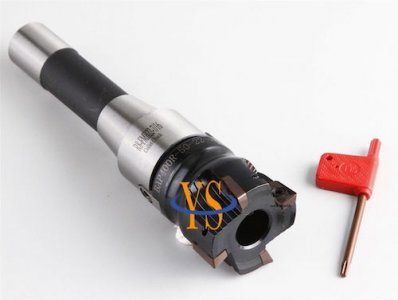- Joined
- Feb 24, 2015
- Messages
- 1,382
I'm looking to purchase a face mill cutter. Most come with inserts designated for steel.
I work mostly with aluminum, but occasionally mill some steel.
The inserts are pretty costy, so I'll probably have settle with one type for while.
What are the differences between inserts made for aluminum and steel?
What ugliness results from using one to cut the other?
How about Mitsubishi round inserts?
and...
Is a face mill cutter good for whittling down stock or is there a better option?
It took me more than 2 hours last night to mill down a 1.5" aluminum rod to a 1.1" square using a .75" end mill making two or three .020 passes on each quill adjustment.
I'd also be interested in any suggestions for a good (reasonable) source for a R8 7/16 face mill cutter. I've spotted a couple on eBay. Decent looking 2" tools seem to be going for about $100 - $130 shipped.
My mill is a bench top (not a mini mill) and probably isn't up to anything much larger, unless I'm wrong.
This one looks decent.
http://www.ebay.com/itm/300946022960?_trksid=p2055119.m1438.l2649&ssPageName=STRK:MEBIDX:IT
I work mostly with aluminum, but occasionally mill some steel.
The inserts are pretty costy, so I'll probably have settle with one type for while.
What are the differences between inserts made for aluminum and steel?
What ugliness results from using one to cut the other?
How about Mitsubishi round inserts?
and...
Is a face mill cutter good for whittling down stock or is there a better option?
It took me more than 2 hours last night to mill down a 1.5" aluminum rod to a 1.1" square using a .75" end mill making two or three .020 passes on each quill adjustment.
I'd also be interested in any suggestions for a good (reasonable) source for a R8 7/16 face mill cutter. I've spotted a couple on eBay. Decent looking 2" tools seem to be going for about $100 - $130 shipped.
My mill is a bench top (not a mini mill) and probably isn't up to anything much larger, unless I'm wrong.
This one looks decent.
http://www.ebay.com/itm/300946022960?_trksid=p2055119.m1438.l2649&ssPageName=STRK:MEBIDX:IT


